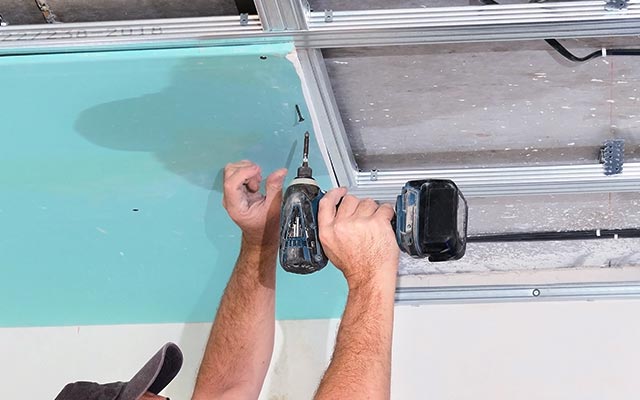How Do PVC Screws Improve Durability and Efficiency?
2025-09-30
PVC screws are a specialized category of fasteners designed to provide reliable performance when working with PVC materials, plastics, and other non-metallic surfaces. Unlike traditional metal screws that are primarily engineered for wood or metal structures, PVC screws are crafted to avoid cracking, splitting, or over-tightening the softer polymer materials they are designed to secure. Their purpose is straightforward yet critical: they ensure stability, precision, and longevity in installations where plastics or PVC elements are key components.
One of the most common challenges in construction, plumbing, and industrial manufacturing is fastening lightweight yet rigid PVC boards, pipes, or fittings without causing structural damage. Traditional screws may generate too much pressure, leading to surface fractures, stripped holes, or weakened joints. PVC screws resolve these issues through engineered threading, optimal tip geometry, and material compatibility that distributes load effectively.
To understand how PVC screws function across industries, it is helpful to examine the types of applications where they are most frequently used:
-
Construction and Building – Fixing PVC panels, trims, siding, and flooring elements.
-
Plumbing Systems – Securing PVC pipes and fittings without compromising watertight seals.
-
Electrical Installations – Mounting conduits, junction boxes, or enclosures made from PVC.
-
Furniture and Interior Design – Fastening decorative panels, modular furniture, and fixtures.
-
Marine and Outdoor Projects – Withstanding moisture exposure when securing PVC structures outdoors.
PVC screws are not only functional but also cost-effective. Their compatibility with automation, power tools, and manual installation makes them versatile across projects of varying scales. The most important technical aspect lies in their thread design, which cuts into PVC without excessive friction while ensuring a firm grip. This thread geometry also prevents loosening, which is a common issue when plastics expand or contract under temperature changes.
In addition, PVC screws often feature self-tapping properties. This means installers do not need to pre-drill pilot holes in most cases, saving time during assembly. The self-tapping design enhances productivity while also reducing the risk of alignment issues.
When evaluating their advantages, one can summarize them into three primary benefits:
-
Reduced Risk of Cracking – Specifically designed for PVC’s unique properties.
-
Long-Term Stability – Maintains fastening integrity even with thermal expansion.
-
Ease of Installation – Time-saving and compatible with manual or automated processes.
In a modern construction environment where efficiency and durability define cost savings and safety, PVC screws are no longer optional—they are becoming a standard requirement.
How Do PVC Screws Deliver Performance Through Design?
The reliability of PVC screws is deeply tied to their engineering specifications. Customers and contractors often need clear information on parameters such as size, material, coating, and structural design. These elements directly influence how well the screws will perform in different working environments.
Below is a detailed parameter overview of typical PVC screw options:
| Parameter | Specification Range / Details |
|---|---|
| Material | Carbon steel, stainless steel, or zinc alloy |
| Surface Coating | Zinc-plated, nickel-plated, black oxide, or anti-corrosion layer |
| Head Type | Flat head, pan head, countersunk, truss head |
| Drive Type | Phillips, Torx, slotted, hex |
| Thread Design | Coarse thread, self-tapping, self-drilling |
| Diameter Range | 2 mm – 8 mm |
| Length Range | 8 mm – 150 mm |
| Point Type | Sharp point, drill point |
| Tensile Strength | 400 – 800 MPa depending on material |
| Applications | PVC panels, pipes, electrical boxes, furniture, siding, etc. |
These parameters demonstrate how PVC screws are designed for flexibility across industries. For instance, a stainless-steel PVC screw with a Torx drive is ideal for marine or outdoor applications where corrosion resistance is vital. On the other hand, a zinc-plated countersunk screw may be more suitable for interior furniture assembly where cost-effectiveness and flush finishing are priorities.
A key aspect of their design is the balance between sharpness and control. The screw tip must be sharp enough to pierce PVC without pre-drilling, but not so aggressive that it shatters the surrounding material. Similarly, the thread pitch is optimized to grip tightly while avoiding stripping.
Coating technology also plays a major role in extending the lifespan of PVC screws. Anti-corrosion coatings like nickel plating or zinc passivation ensure that screws maintain their structural integrity in humid or chemically exposed environments. This detail is critical for customers in industries like plumbing and marine construction.
Another important feature is head design versatility. Flat and countersunk heads allow for smooth finishes on visible surfaces, while pan or truss heads are better for hidden joints that require stronger holding power.
Therefore, technical precision in manufacturing PVC screws ensures that each screw performs reliably, regardless of the industry or installation environment.
How Do PVC Screws Improve Efficiency and Cost Savings?
The construction and manufacturing sectors operate under tight budgets and deadlines. Choosing the correct fastener directly impacts project timelines, safety, and long-term reliability. PVC screws contribute significantly to efficiency and cost savings across various industries.
Construction and Housing
PVC screws reduce installation time by minimizing pre-drilling. This efficiency is particularly useful in large-scale housing projects where contractors work with siding, trims, or PVC panels. Since the screws are designed to avoid material cracking, fewer repairs or replacements are required, which translates into direct cost savings.
Plumbing and Piping Systems
PVC pipes are integral to water supply and drainage systems. Using the wrong fasteners can cause leaks or weakened joints. PVC screws are designed to apply uniform pressure, preserving watertight seals. This feature minimizes maintenance costs and reduces the risk of system failure over time.
Electrical and Communication Systems
Fastening PVC conduits or junction boxes requires screws that do not strip or loosen under vibration. PVC screws provide stability, which is critical in ensuring uninterrupted power or communication flow. Their secure fit also enhances safety by reducing risks of loose connections.
Furniture and Interior Design
PVC boards and decorative elements are common in modern furniture. The aesthetic requirement for smooth finishes makes countersunk or flat-head PVC screws ideal. Their easy installation reduces assembly time, which is highly valuable in mass-production environments.
Outdoor and Marine Installations
Moisture, salt, and environmental stressors demand corrosion-resistant fasteners. Stainless steel PVC screws meet these challenges, making them the preferred choice for docks, outdoor signage, and coastal construction projects.
Overall, the efficiency improvements brought by PVC screws are twofold:
-
Labor Efficiency – Faster installations reduce man-hours.
-
Maintenance Efficiency – Long-lasting fasteners reduce repairs and replacements.
In addition, standardization in PVC screw production ensures compatibility with automated machinery in factories. Mass production processes become smoother when screws can be consistently applied without special adjustments.
From a sustainability perspective, reducing material waste is another advantage. Since PVC screws are designed to minimize damage, fewer boards, panels, or pipes need to be discarded. This not only saves money but also aligns with eco-friendly construction practices.
How Do Buyers Choose the Right PVC Screw?
Selecting the right PVC screw depends on understanding the project requirements. Customers should evaluate several factors before making a purchase:
-
Material Compatibility – Stainless steel for outdoor projects; carbon steel for indoor cost efficiency.
-
Coating Requirement – Anti-corrosion plating for plumbing or marine applications.
-
Head and Drive Type – Flat head for visible surfaces; Torx for high-torque industrial use.
-
Thread Geometry – Coarse threads for faster grip; self-drilling for reduced labor.
-
Length and Diameter – Proportional to PVC thickness and load requirements.
By carefully analyzing these factors, customers can ensure they achieve both structural stability and cost savings.
Frequently Asked Questions (FAQs)
Q1: How do PVC screws prevent cracking in plastic materials?
PVC screws are designed with specialized thread geometry and sharp but controlled tips. This design distributes stress evenly and avoids excessive pressure on the plastic, which reduces the risk of cracking or splitting during installation.
Q2: How do I select the right PVC screw for outdoor use?
For outdoor projects, stainless steel PVC screws with corrosion-resistant coatings are recommended. These fasteners withstand moisture, temperature fluctuations, and UV exposure, ensuring long-term durability without rusting or weakening.
How Do PVC Screws Reflect Quality and Reliability in Modern Manufacturing?
PVC screws are no longer just optional fasteners; they are essential components in industries ranging from housing and plumbing to marine and furniture production. Their specialized design ensures secure fastening without damaging PVC materials, while their technical parameters guarantee performance across diverse applications. Whether the priority is cost efficiency, labor savings, or long-term stability, PVC screws consistently deliver measurable benefits.
As industries demand higher efficiency and reliability, selecting the right supplier becomes equally important. RUNYEE factory is a trusted manufacturer providing high-quality PVC screws tailored to various applications. With advanced production capabilities and strict quality control, RUNYEE ensures every product meets international standards. For more details or to explore customized options, contact us to discuss your project needs.




























